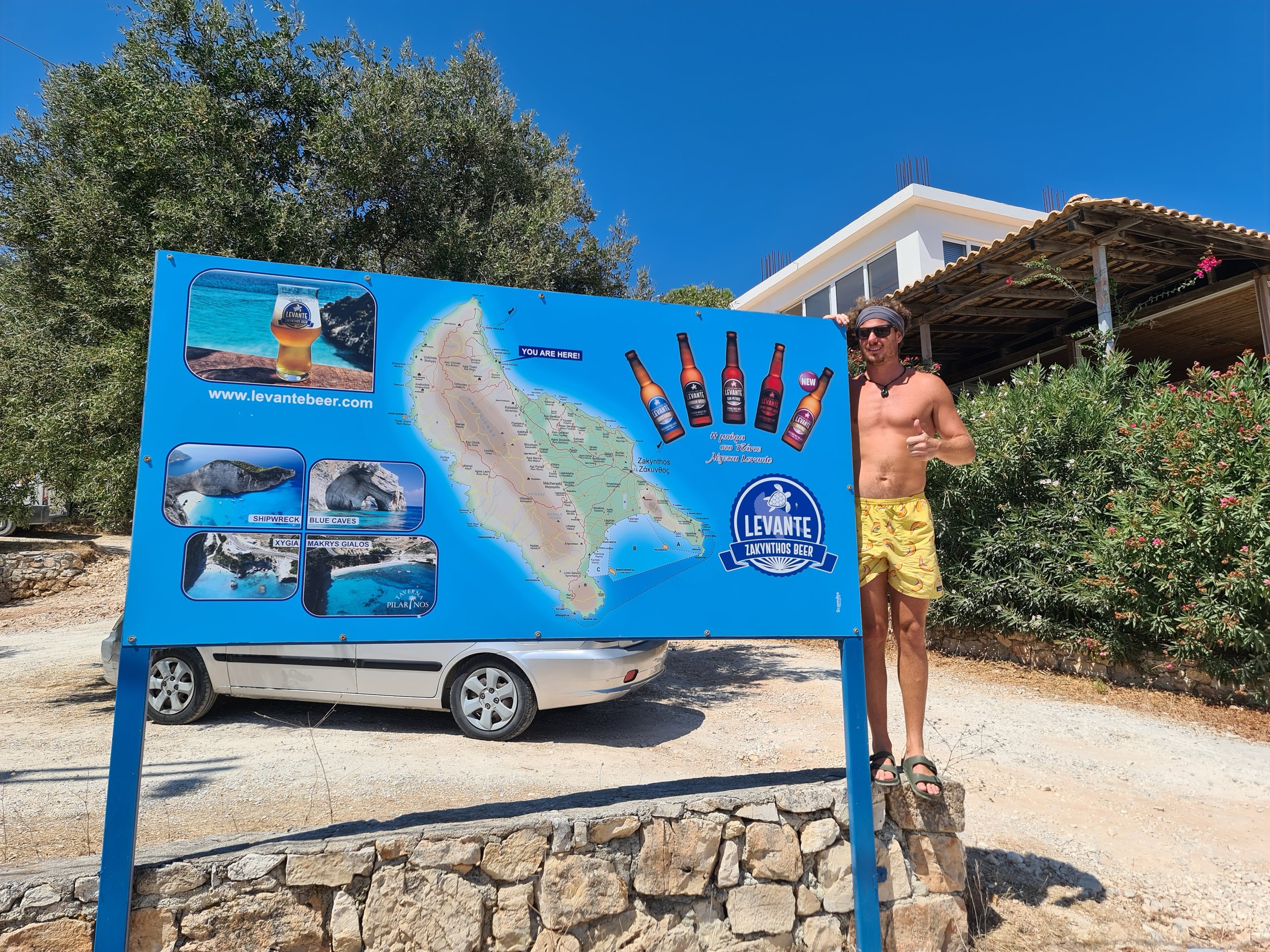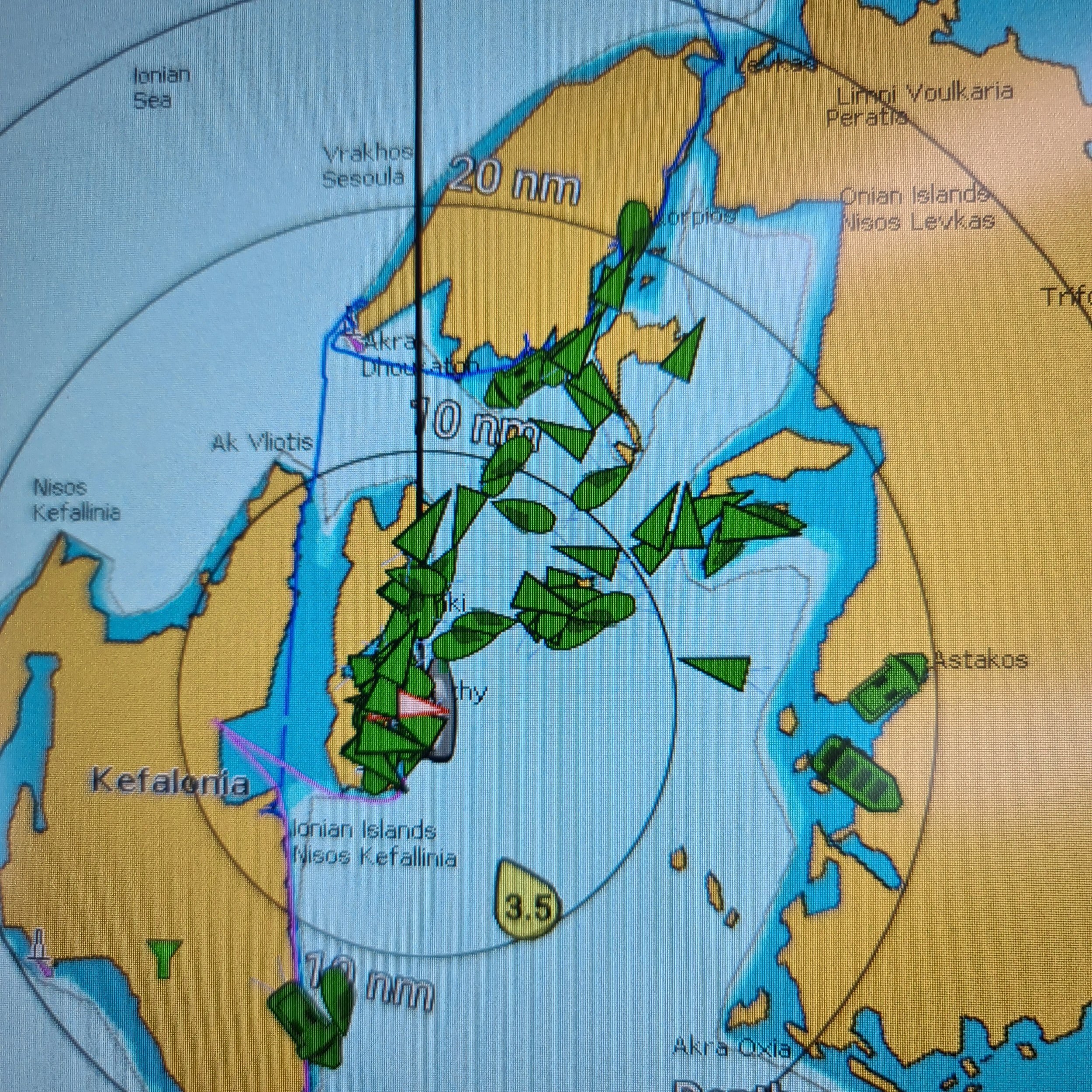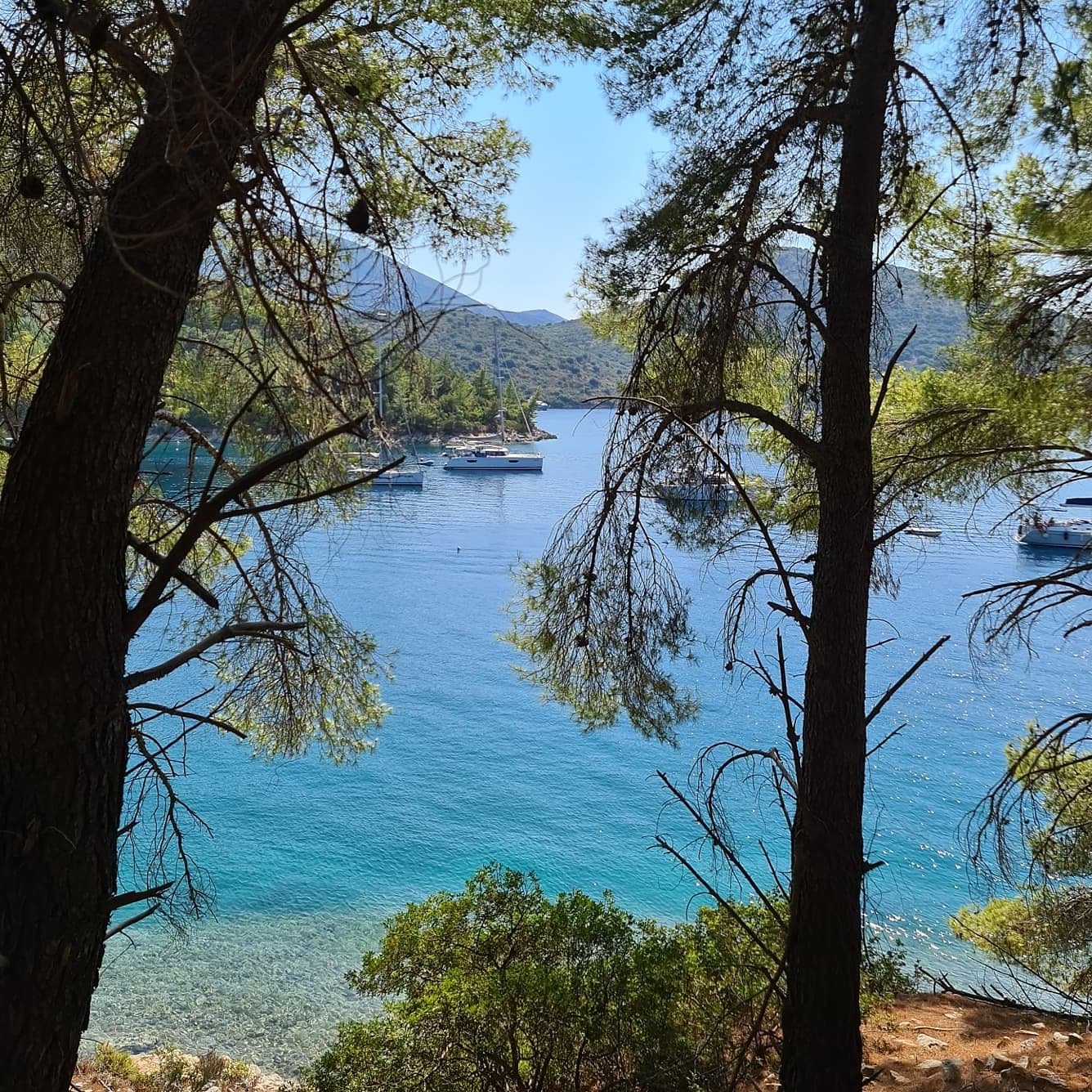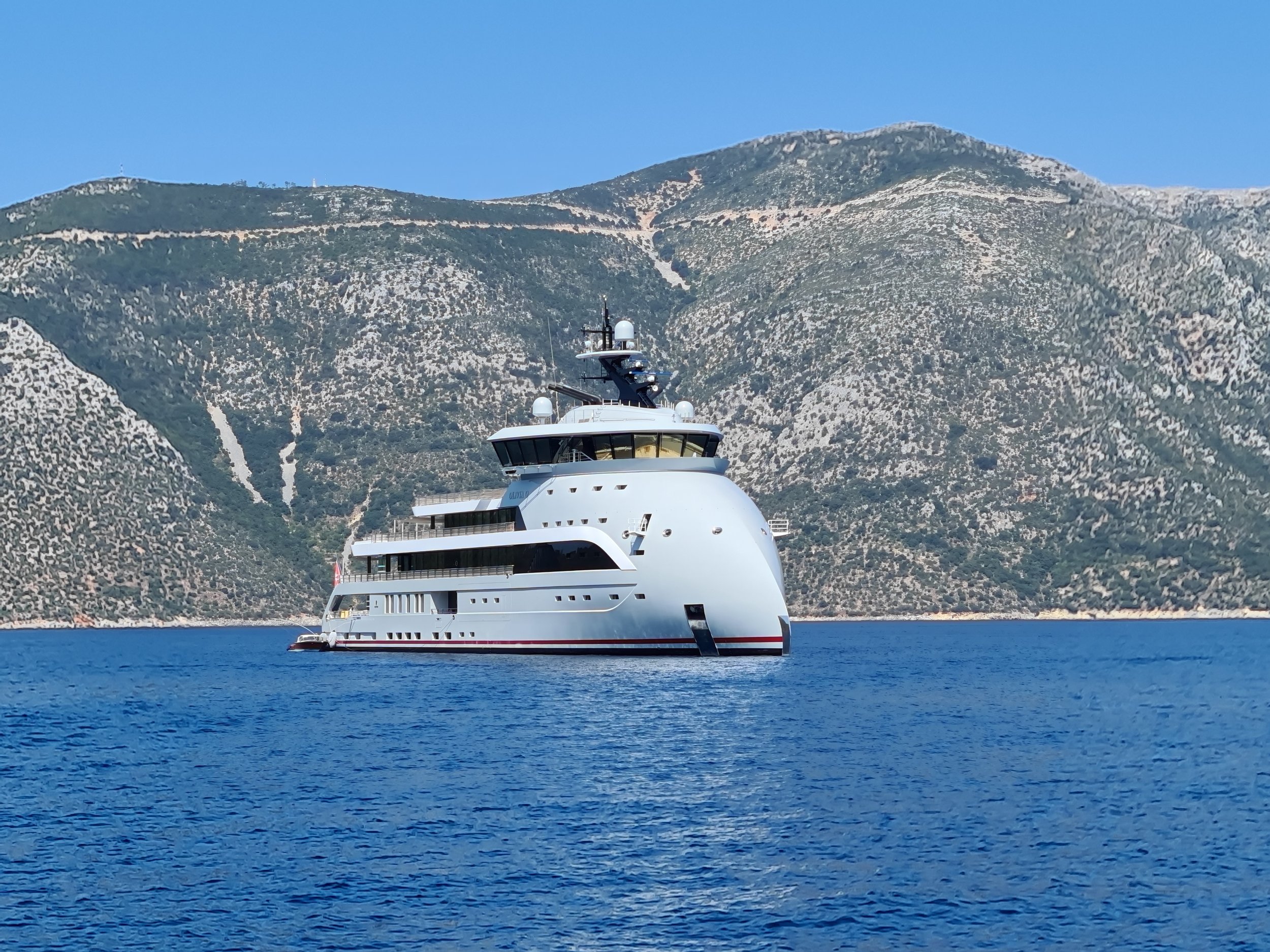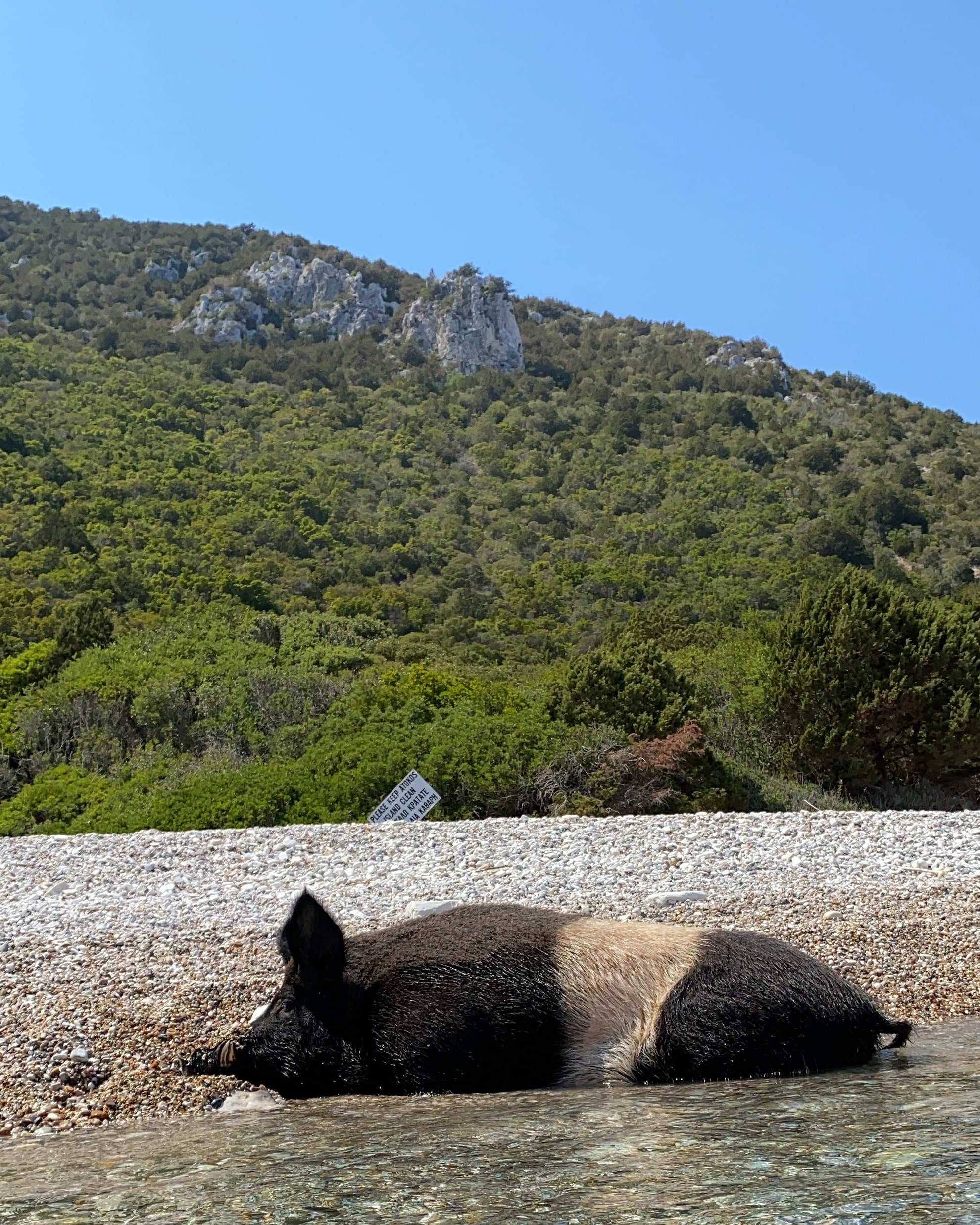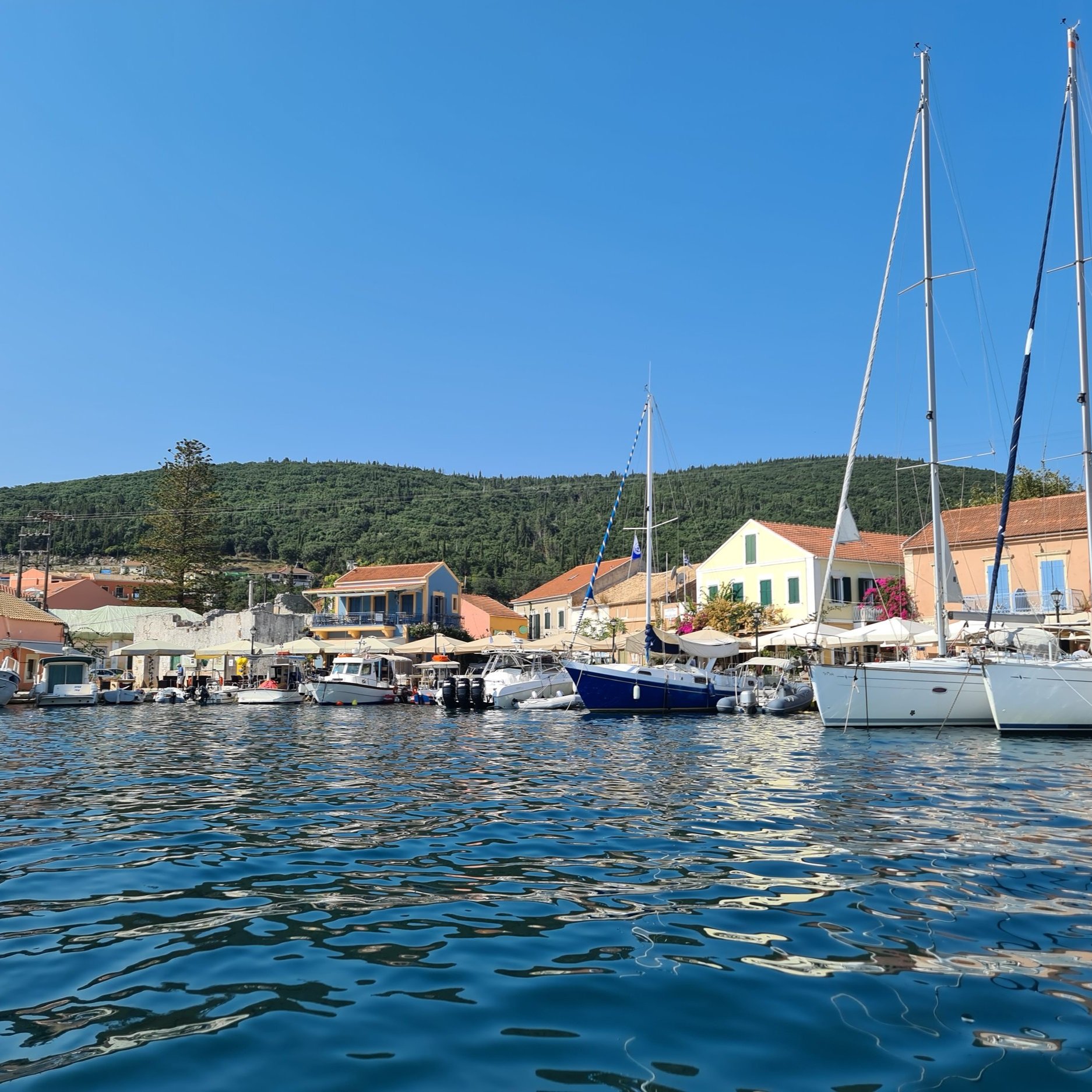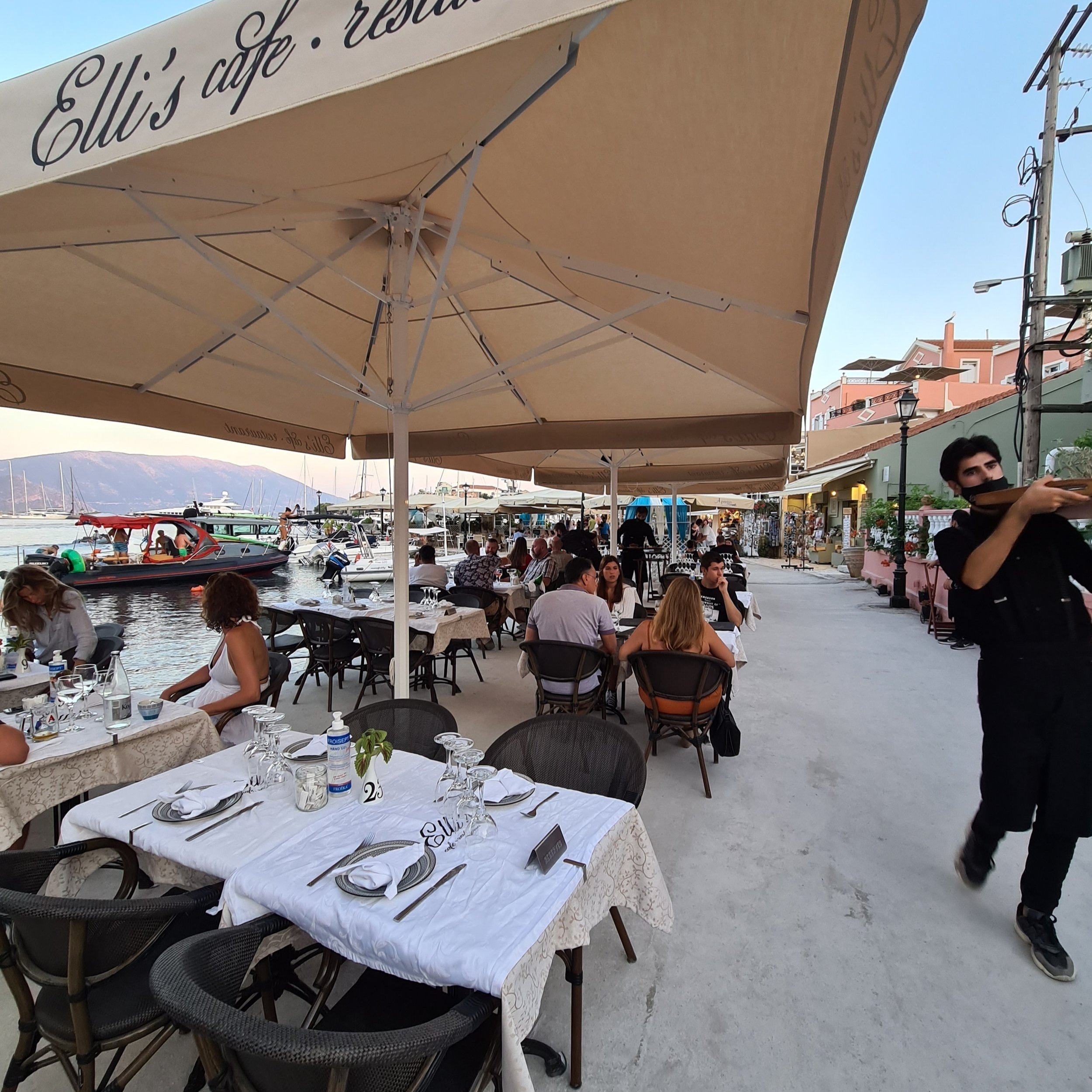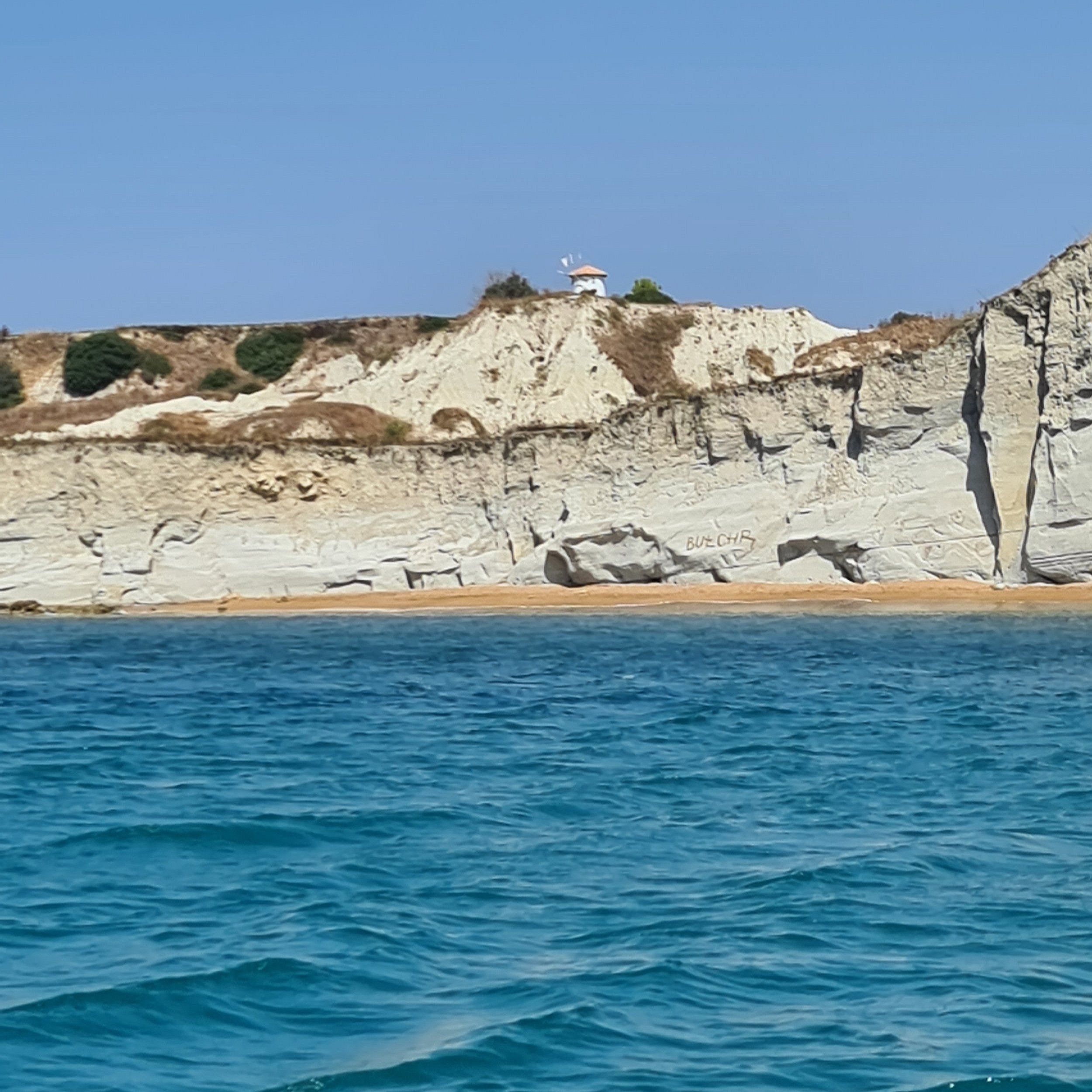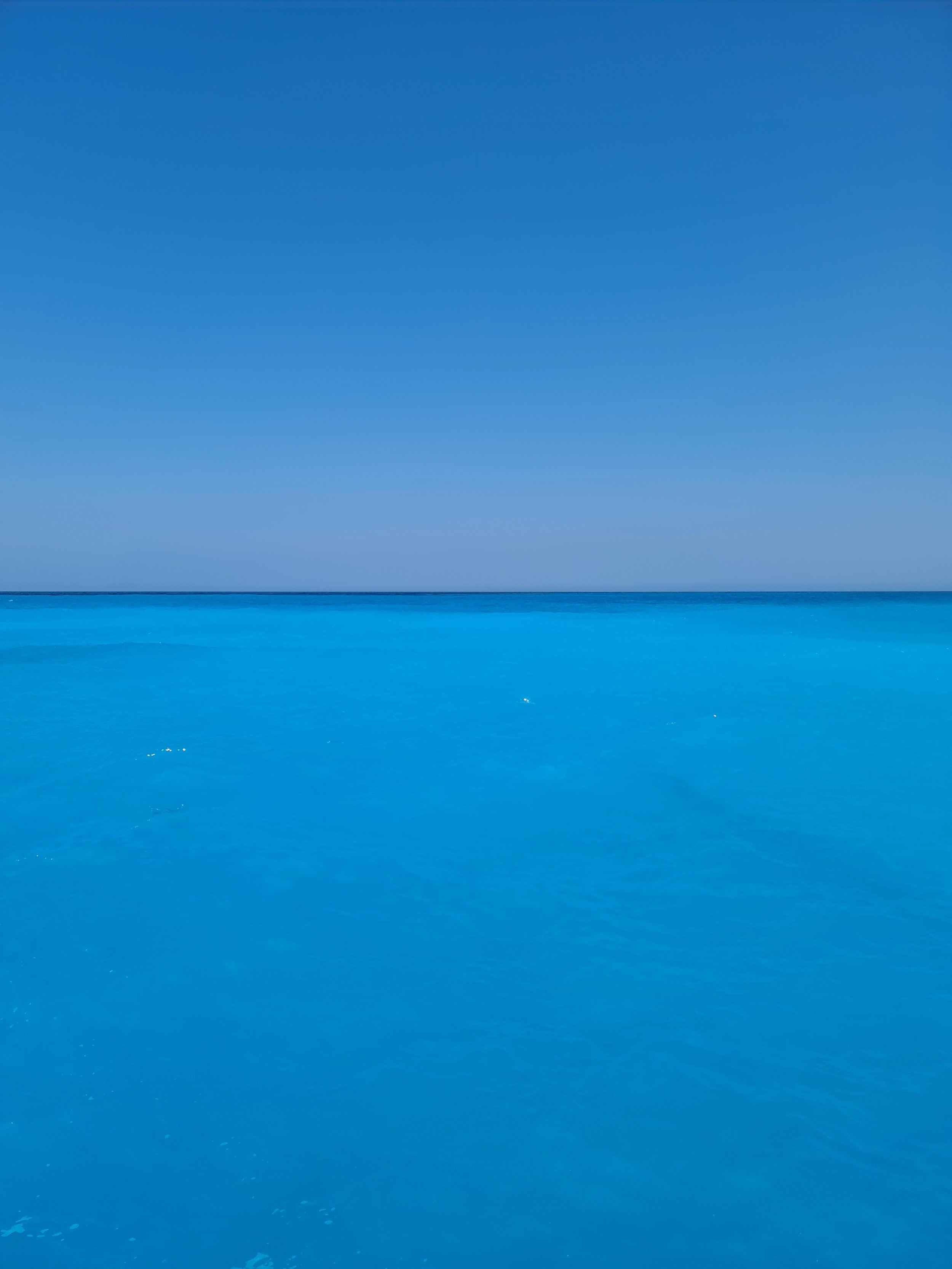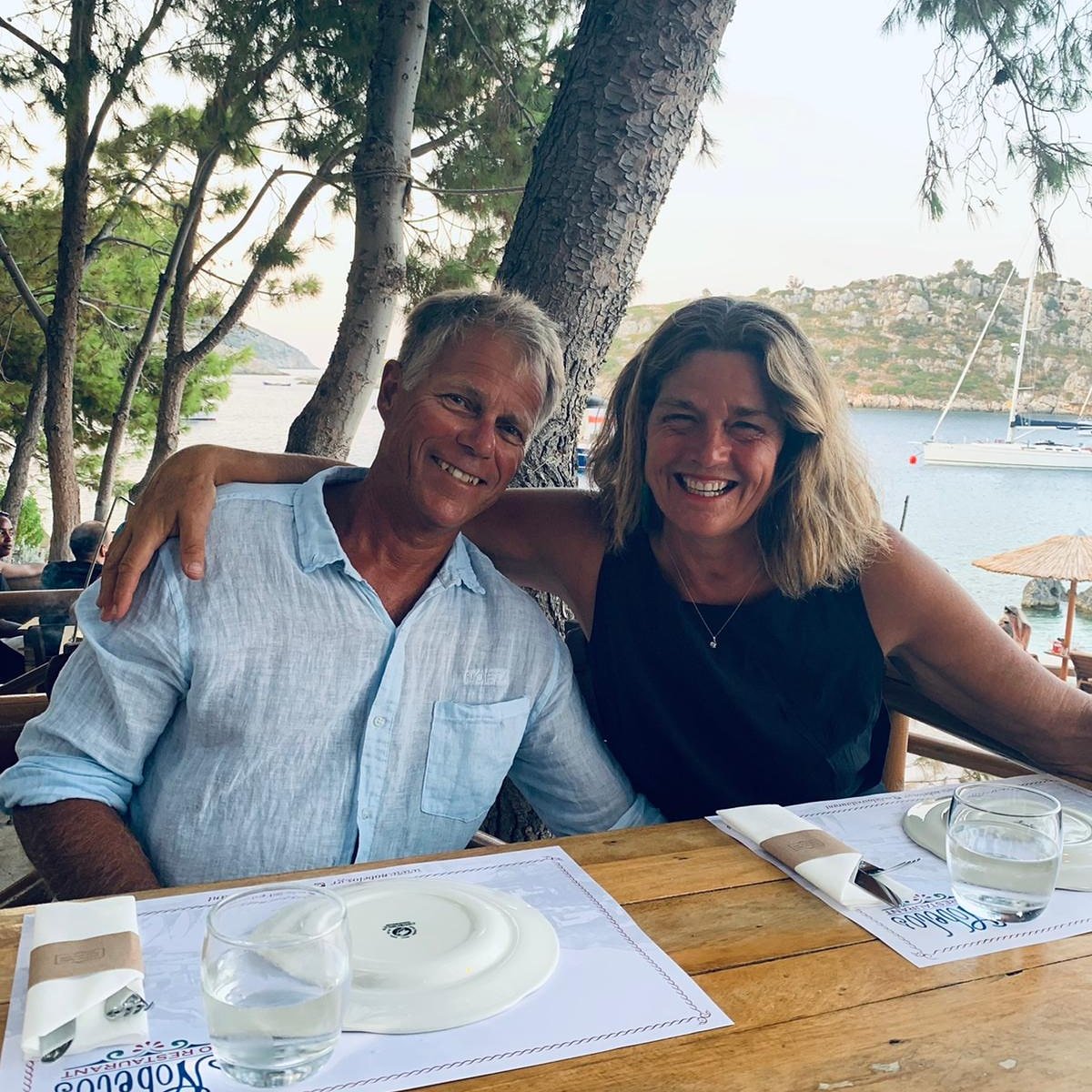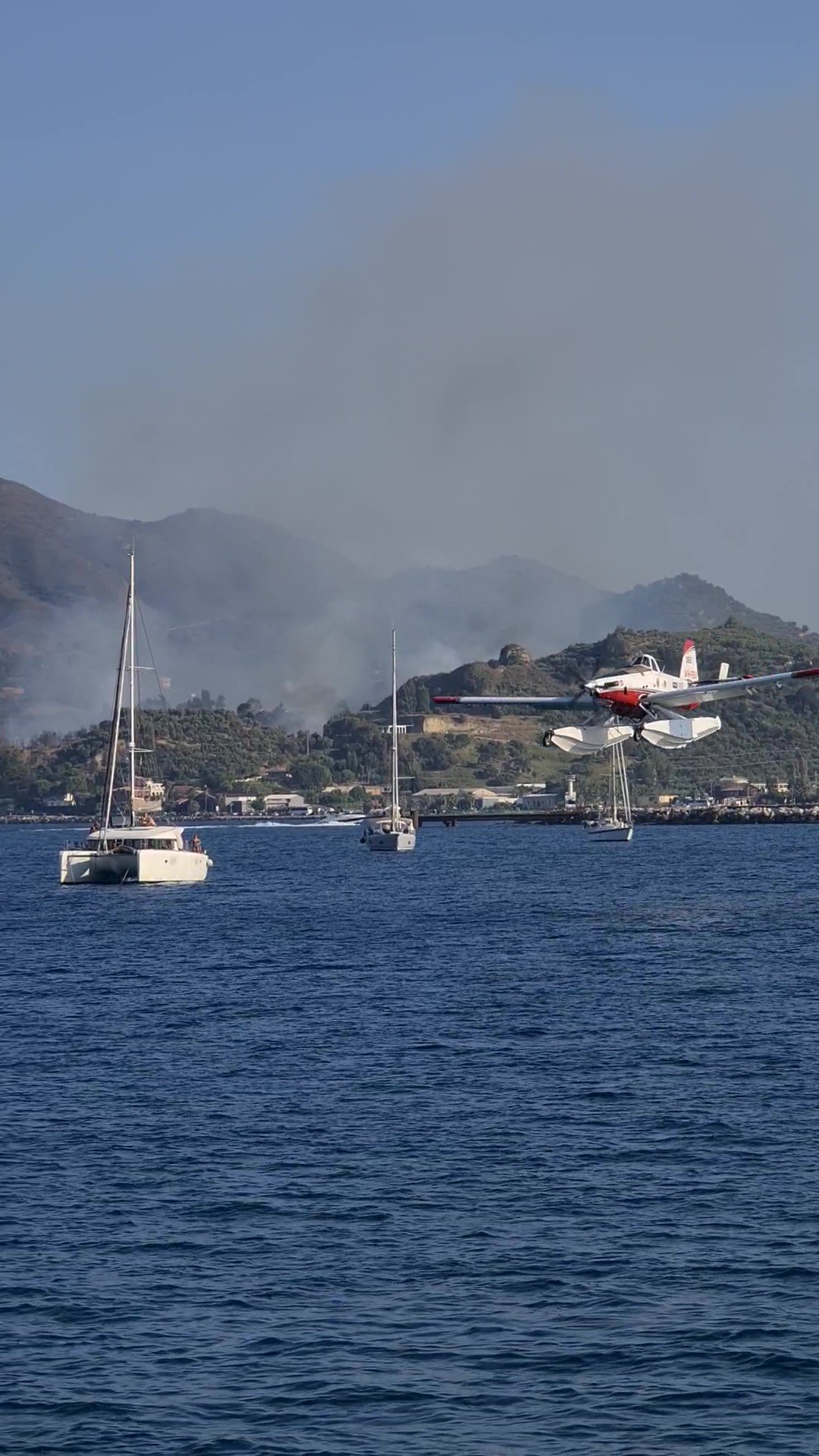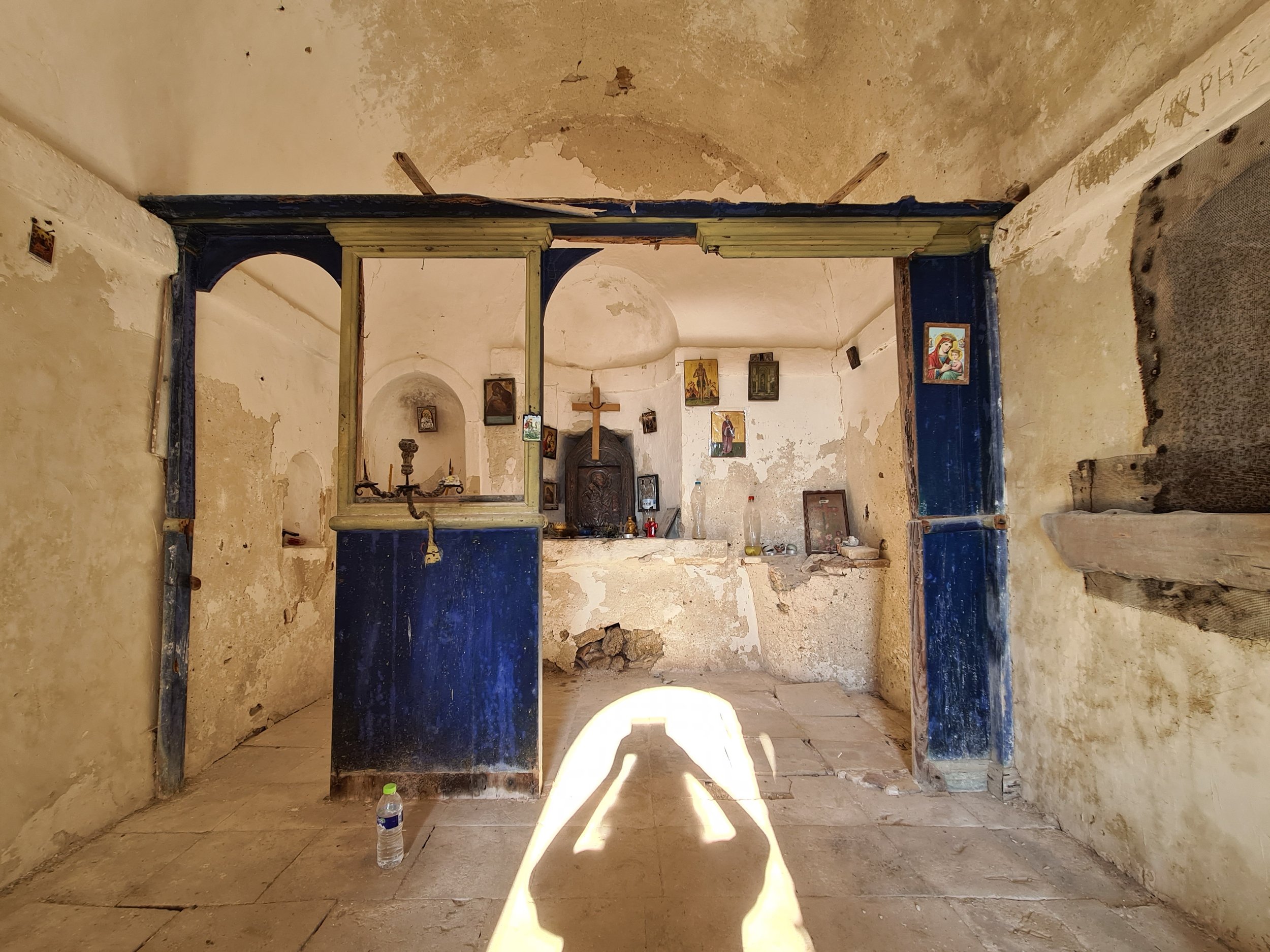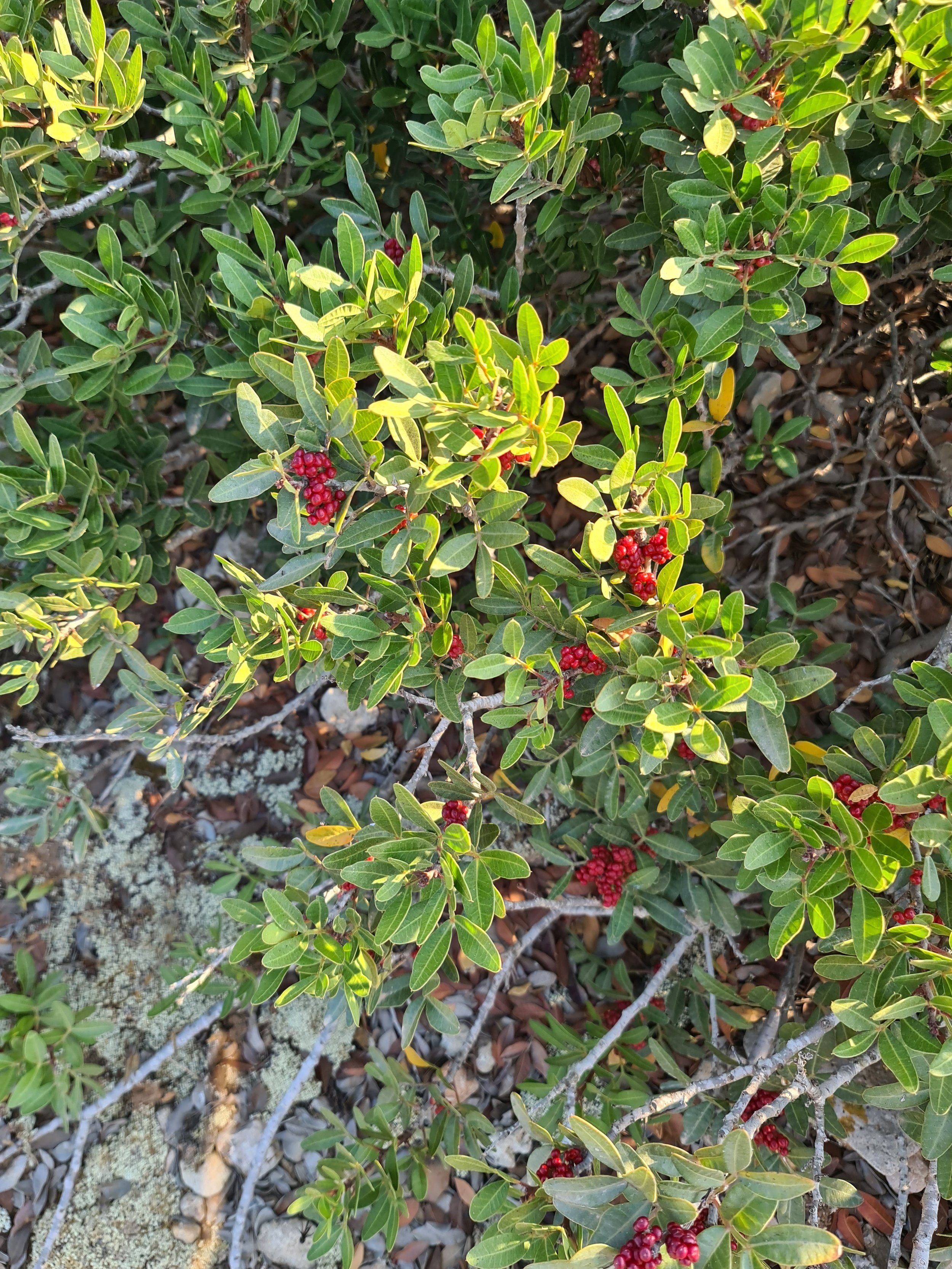Greece - Southern Ionians
The Ionians – we had last visited here in August 2019, eight days with some of our children and it had been all too fleeting; was there more to discover? So we bashed four hours across the Ionian Sea into NW 30 knot winds to turtle island Zakynthos, population 40,759, to pick up crew and spend three weeks in the southern islands.
Zakynthos in August - hot, busy, wasps, hornets, and people; the heatwave continued with fleets of boats choosing to sail in the Ionians rather than going east to the Aegean. With the Corinth Canal closed due to landslide repairs the Peloponnese is a much longer southerly route to the Aegean and off-putting for some people.
Our first anchorage was in south facing Lagana Bay, extremely popular with young Brits (as we had discovered in 2019) and turtles (plenty to see this time around) plus it provided an easy crew pickup place in Laganas harbour. The night before our crew, niece Aana and cabin boy Tom, arrived we sweltered through a season high - water 30 degrees, air temp 40 @ 1900, it was going to be a shock for them coming straight from New Zealand winter. We hadn’t explored Laganas town before, it started out well, watching turtles playing in close to shore while picking up the crew, but onshore - a main street of searing concrete heat, seediness and rubbish, quite unlike anything we had experienced in Greece before, just awful.
It was refreshing to have new eyes on board and, with that, suggestions on places to explore. Levanate brewery - unfortunately all out of stock but as is the Greek way, the manager managed to find us a cold bottle to share, complimentary of course and Xigia Sulphur beach and cave - icy cold spring sulphur water mixing into a warm sea - cloudy and pungent - thanks Tommy!
North of Zakynthos lies Kefalonia, population 35,801, and approaching from the SE was interesting - an unchartered reef going from six to just over two metres very quickly! And still the wasps continued…..but more manageable due to a cunning water bottle design; once you can entice a couple in to partake of some martini rosso, the pheromones do the rest of the trick. Up past picturesque Poros, looking through the Drakena Gorge into fertile farmland (legend has it a dragon lives in a cave in the gorge) we anchored for the night in murky Effimia harbour, sharing a few wines and yarns with fellow kiwis Pip and Mike from Waiari and Roy and Fi from Delightful Lady.
We were keen to get across to Ithaka, homeland of Odysseus and now population 3,231. An island of unspoilt greenness, narrow deep bays, charming pebble beaches and people - we spied at least 50-100 boats either on route or med moored in one of the many small, forested coves. However in our four nights there we did manage to find relatively empty bays, some more picturesque than others and most with a resident trip of goats. Water 28.2 degrees, air temp 35 @ 2300, the heatwave continued with fires on the mainland (dangerously close to Olympia) and Evia.
Before heading back to Kefalonia we decided to go east an hour for lunch and a snorkel on Atakos, population one family who sometimes visit in September. Atakos is a small privately owned island, one church, one house, with signs welcoming visitors and asking them to keep the island clean. Highlight was mama pig keeping watch as her three little piglets wallowed in the sea, and rubbed their backs on the stony beach, they were feeling the heat as well.
Back across to Kefalonia and the quest to find a parking space continued, finally anchoring outside Fiskardo where we were soon joined by the multitudes. It’s a funny thing, some boats just like to anchor near others (not us); we’ve lost count of the number of times we’ve been the first in a bay, with plenty of room, a boat arrives and anchors right next to us, grrr.
Fiskardo is a pretty wee Italianate town (mostly because it was the only place not demolished by the 1953 earthquake - something to do with it sitting on clay); the harbour and seafront jam-packed with boats of all shapes and sizes, ferries arriving continuously, tavernas lining the shore - so many to choose from! Delicious food, superb people watching and just bearable for three days - too many boats, too many people, utter madness.
With favourable SW winds we were able to sail around to the west coast of Kefalonia to Assos (this is normally a no-go in N winds) and discovered a small colourful three taverna town with a 16th century headland plateau citadel, as you do. Of course we hiked up to the citadel; the size of the plateau was the most interesting aspect as truly little remains of any buildings. Heading back down to Zakynthos we had been told to check out Paralia Myrtos with its long golden beach, blue sea lapping, but what was much more interesting was Paralia Xi – red sand beach, white clay cliffs and blue water - unique.
Back in Zakynthos, we spent a couple of hours doing the tourist thing, revisiting the very dramatic west coast Navagio Beach, checking out the much lauded Blue Caves and finishing up with a very expensive dinner at Nobelos Bio Restaurant; the cocktails and wine were good. Meanwhile the fires continued, this time a little closer to home with ground forces, firefighting aircraft and an Ericsson helicopter battling for hours to keep it from reaching the town of Argassi, a mere one bay south of the main town Zakynthos. We were anchored one bay north and spent the afternoon watching aircraft flying and landing all around us refilling their water tanks.
Then it was back down to the Peloponnese, anchoring midway for a night in the Strofadhes - Arpia (population 0) and Stamfáni (population two alternating Greek church guards). The islands lie 27 nautical miles south of Zakynthos and are equidistant from the Peloponnese coast; remote, rocky, and flat, they are not a place to be in in unsettled weather. But we had a light N forecast and managed to find a 15 metre sandy patch amongst the boulder strewn seabed. Although exposed in all directions, the islands are very green and the stopping off place for thousands of migratory birds heading north in spring from Africa. In Greek mythology these islands were believed to be the dwelling place of harpies – a half woman half bird creature personifying the destructive power of storm winds – fact informing fiction.
An early evening stroll took us around the 13th century fortress/monastery sitting sad and proud on Stamfáni; once home to 100 monks it is now slowly falling into disrepair, and then across to Arpia, we explored an abandoned stone house and church hiding in the acres of Pistacia lentiscus, freshwater wells nearby. A gentle time for reflection before heading across to the Peloponnese and the Mani…..




